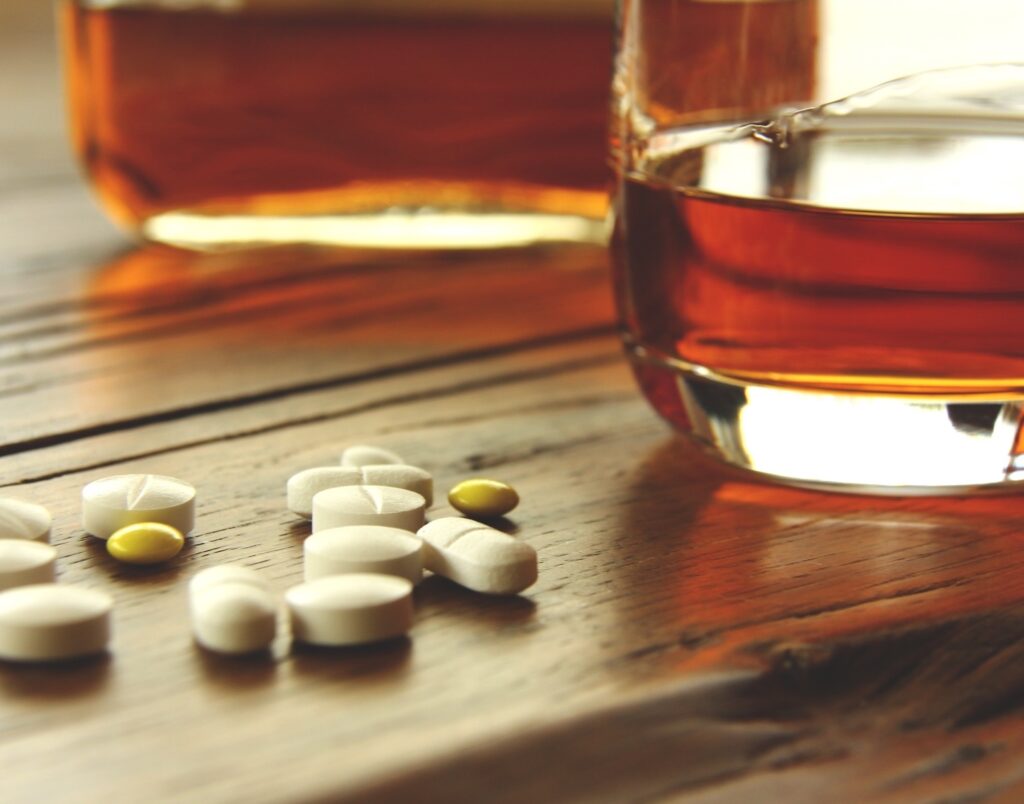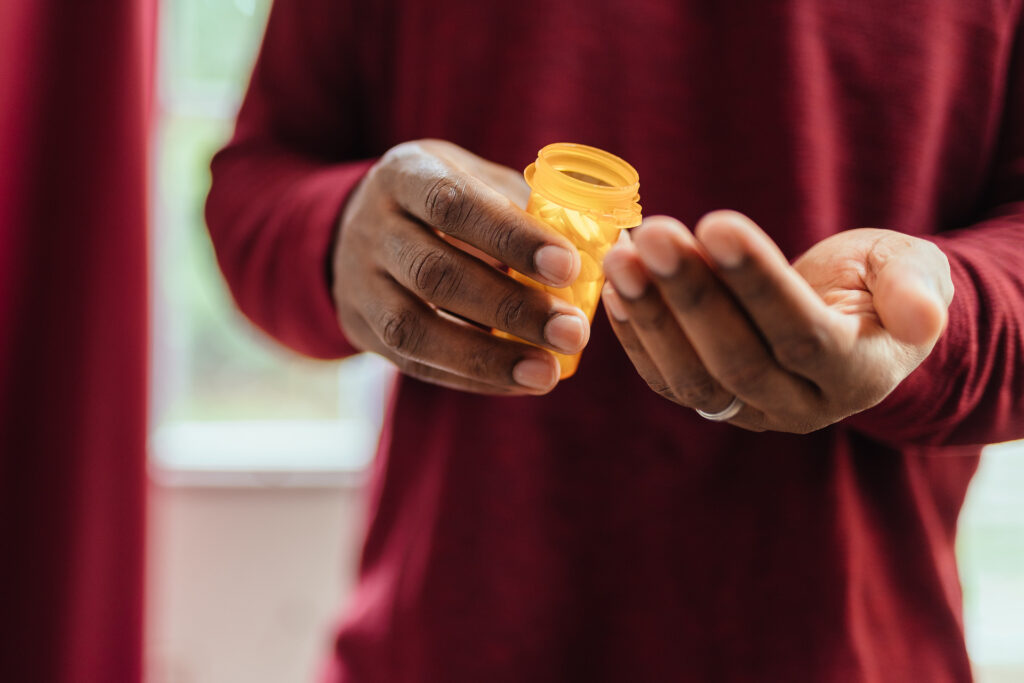Polysubstance use refers to the use of more than one drug at a time, whether the drugs are taken together or within a short timeframe. Polysubstance use can be intentional or unintentional.
People who use substances may choose to take more than one substance at once. However, polysubstance use can also happen unintentionally—i.e., without awareness that substances are being mixed together.
Intentional vs. Unintentional Polysubstance Use
Intentional polysubstance use is defined as taking more than one substance in order to increase or decrease a particular effect or otherwise alter the effects of a substance. Common examples of intentional polysubstance use include mixing stimulants (ecstasy and cocaine), mixing depressants (opioids and benzodiazepines), mixing across categories (stimulants and depressants, or stimulants and hallucinogens), and—most commonly—drinking alcohol while using other substances.

In contrast, unintentional polysubstance use occurs when people take a substance that has been mixed or cut with other substances. This is most common in drugs that are procured from illicit sources, such as street dealers or illicit online pharmacies. In recent years, a proliferation of potent opioids such as fentanyl and its related analogs has led to an increased risk of opiate overdose, even in drugs that are sold as “uppers”.
Both intentional and unintentional polysubstance use come with much greater risks than using a single substance. Combining substances may have effects that are not only stronger than a single substance but also far less predictable and sometimes lethal.
Alcohol and Prescription Drugs
Given that drinking is so ubiquitous, alcohol often ends up being the default substance in a polysubstance use scenario. But despite how common it is to drink and use one or more other drugs, alcohol is particularly dangerous to mix with other drugs. Alcohol has well-documented interactions with prescription medicines and over-the-counter medicines, as well as with many illicit substances.
Prescription drugs can also play a dangerous role in polysubstance use. Different categories of pharmaceutical drugs may interact with illicit (or other licit) drugs. Doctors and pharmacists are tasked with catching potential interactions between licit drugs, assuming those drugs are used in the way they are prescribed.

In fact, many well-documented interactions between prescription drugs are regularly cautioned against. But when it comes to mixing licit drugs with illicit drugs or using licit drugs in ways they are not prescribed, interactions become less predictable and thus more dangerous.
Why Is Polysubstance Use So Dangerous?
When more than one substance is used by an individual, they run the risk of combined drug intoxication. This is a common cause of hospital visits and has also led to countless drug-related deaths. Some of the effects of combining drugs include brain damage, heart problems, respiratory failure, seizures, liver and kidney damage, and death.
How Can You Reduce Risk Related To Polysubstance Use?
Polysubstance use is often talked about in the context of partying and recreational highs. But the truth is that polysubstance use is also a major coping mechanism and self-medication routine for many people with underlying mental health issues, such as depression and anxiety. In this case, a successful course of treatment would need to tackle both the issues of substance use and the underlying mental health issues.
Quitting cold turkey can be unsafe and even lethal with certain substances. If treatment isn’t accessible or possible at a given time, harm reduction techniques can help mitigate risk to an extent. These include having street drugs tested, sourcing a clean supply, carrying naloxone, and not using alone, among others.
Sunshine Coast Health Centre and Georgia Strait Women’s Clinic are world-class centres for addiction and mental health treatment. Both centres support individuals through evidence-based holistic approaches that take all aspects of an individual’s healing into account. If you or someone you know is struggling with substance use or mental health, give us a call today.
Sources:
https://www.cdc.gov/stopoverdose/polysubstance-use/index.html
https://www.webmd.com/connect-to-care/addiction-treatment-recovery/cocaine-and-fentanyl-facts



